Introduction
With its growth in popularity, gouache painting has continued to rise in demand for painters in the art community.
Gouache painting is a water-based pigment that meshes watercolor and acrylic paint for an opaque and matte finish.
To simplify…
Gouache is opaque watercolor.
With its unique characteristics and stunning visual effects, gouache has captured the attention of art enthusiasts worldwide.
In this ultimate guide, you will learn everything you need to know to get started with gouache painting and create your own stunning artworks.
So don’t worry if you’re completely new and have no idea where to start, I’m hoping this will help you out!
- Chapter 1: Understanding Gouache Painting
- Chapter 2: Getting Started with Gouache Painting
- Chapter 3: Exploring Techniques in Gouache Painting
- Chapter 4: Step-by-Step Gouache Painting Tutorial
- Chapter 5: Caring for Your Gouache Artworks
- Chapter 7: Recommended Gouache Paint Brands
- Chapter 8: Final Thoughts
Chapter 1: Understanding Gouache Painting

What sets gouache painting apart
- Vibrant colors: Gouache paints are known for their intense pigmentation, resulting in opaque, rich and luminous hues on the paper. This allows for striking color effects and bold, eye-catching artwork typically characteristic of an ‘animated’ style of painting.
- Velvety finish: One of the defining features of gouache is its matte, velvety appearance when dry. This characteristic adds depth and texture to paintings, giving them a distinctive tactile quality.
- Layering capabilities: Gouache can be layered to create complex compositions with varying opacities. This makes it suitable for building up intricate details and achieving a wide range of visual effects.
Gouache vs. Watercolor
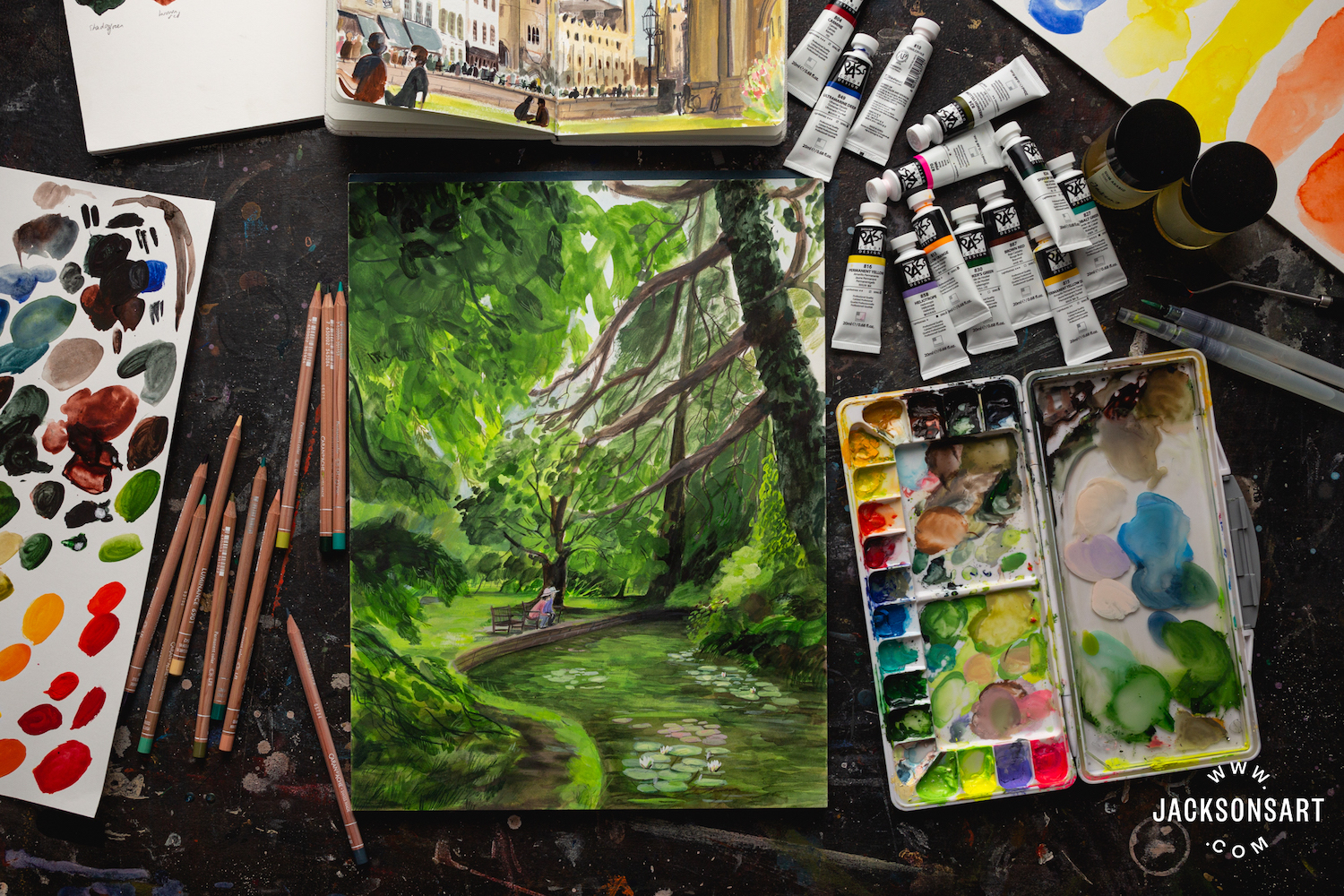
When comparing gouache painting to watercolor painting, there are a few key differences to consider:
- Opacity: Unlike watercolors, which are transparent, gouache is an opaque medium. This opacity allows for corrections and highlights by layering lighter colors over darker ones.
- Color intensity: While both mediums offer vibrant colors, gouache provides a more saturated and intense pigment due to its higher concentration of binders and fillers.
- Texture: Gouache dries to a matte finish, while watercolor retains its translucent and glossy appearance. The velvety texture of gouache adds a unique tactile quality to artworks.
Gouache vs. Acrylics
Comparing gouache painting to acrylic painting reveals these distinctions:
- Reactivity: Unlike acrylics, which are water-resistant when dry, gouache remains rewettable even after drying. This property allows for reactivation of the paint layers, making it easier to blend or rework areas.
- Matte finish: While both mediums can achieve opaque coverage, acrylics often have a glossy finish unless specifically formulated otherwise. Gouache consistently dries with a matte surface, adding a distinct character to the artwork.
- Layering: Gouache lends itself well to delicate layering techniques due to its rewettable nature, while acrylics can dry quickly, requiring swift execution or additives for extended blending time.
Chapter 2: Getting Started with Gouache Painting

When you’re just starting out with gouache painting, it’s important to have the right art supplies to give yourself the best chance of success.
Here’s a rundown of the key materials you’ll need and some recommended brands to consider if you’re a beginner.
Essential Art Supplies for Gouache Painting
1. Gouache Paints

- If you’re new to gouache, it’s a good idea to start with a basic set of primary colors like red, blue, yellow, black, and white (the Holbein Artists’ Gouache Paint Primary Set of 5 is a great choice). These colors can be mixed together to create a wide range of hues and tones.
- When choosing gouache paints, you want to go for artist-grade ones as they tend to have better pigmentation and lightfastness (i.e., they won’t fade over time), this will save you A LOT as you’re not compromising the quality of your work with cheapy art supplies
2. Paint Brushes

- It’s worth investing in a selection of brushes that are specifically designed for use with gouache. You’ll want some round brushes for adding details and smaller areas, as well as larger flat brushes for covering bigger areas and creating washes.
- Synthetic brushes are often recommended for gouache painting because they’re durable and hold their shape well when used with thick paint.
- My personal recommendation for a good quality set of brushes for gouache painting are the Princeton Neptune Synthetic Squirrel brushes
3. Paper

- When it comes to paper for gouache painting, look for something that’s heavyweight and has a surface that’s been specially designed for use with gouache or watercolors. Cold-pressed or hot-pressed paper tends to work well as it has the right texture for applying gouache.
- I recommend Arches 300gsm Hot Press watercolor paper. This 100% cotton paper is perfect for water-based mediums such as gouache and watercolor as it doesn’t buckle when wet. However, any paper specific for watercolor use will do.
4. Palette

- Having a palette or mixing tray is essential for blending your colors together and getting the right consistency of paint. You might find it helpful to choose a palette that has separate wells for each color so they don’t all blend together, and also to stop them from drying out too quickly.
Recommended Brands for Quality Gouache Materials
As a beginner, it can be really useful to try out materials from well-known brands that are known for producing good quality gouache paints and art supplies.
Here are a few options that many artists recommend:
- Winsor & Newton Gouache: This brand is known for its excellent pigmentation and smooth consistency, which makes it a great choice for both beginners and more experienced artists.
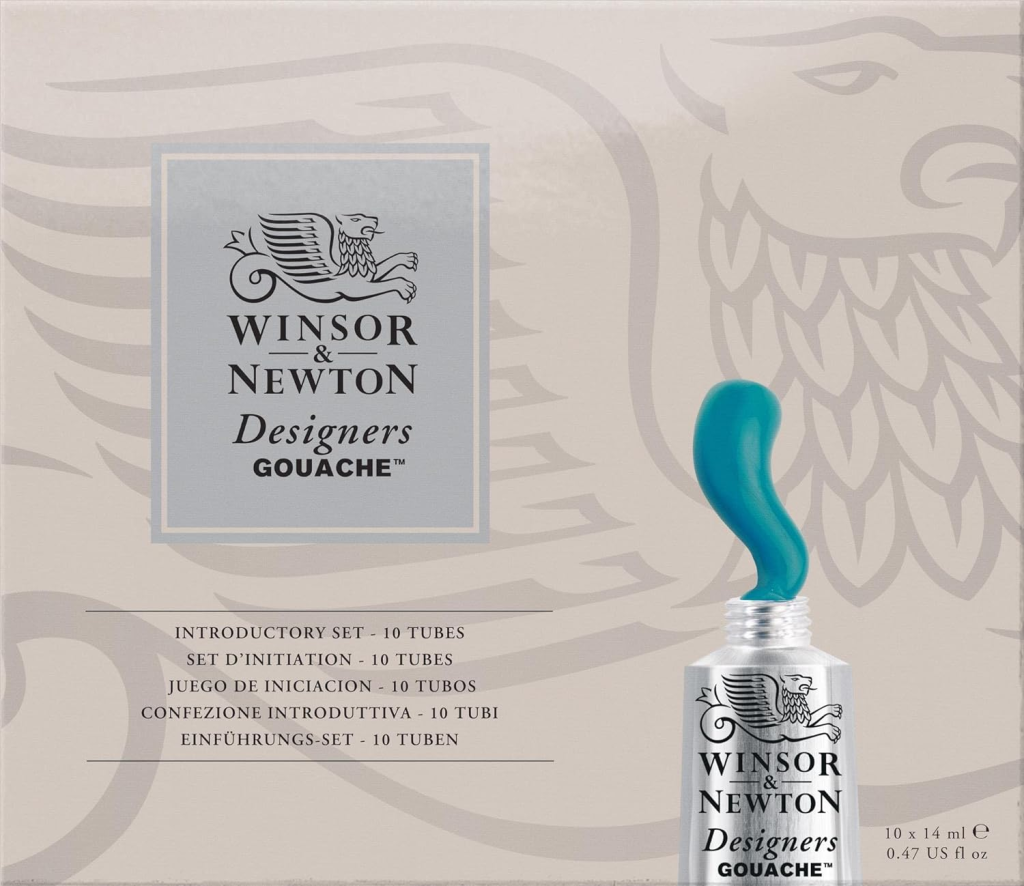
- Holbein Acryla Gouache: If you’re looking for something a bit different, this brand offers gouache paints that are actually acrylic-based. They have vibrant colors and dry to a matte finish, giving you lots of versatility in your artistic techniques.

- Arteza Gouache Paint: If you’re on a tighter budget but still want decent quality paints, Arteza is worth considering. They offer a wide range of colors at an affordable price and exceptional value, so you can experiment without breaking the bank.
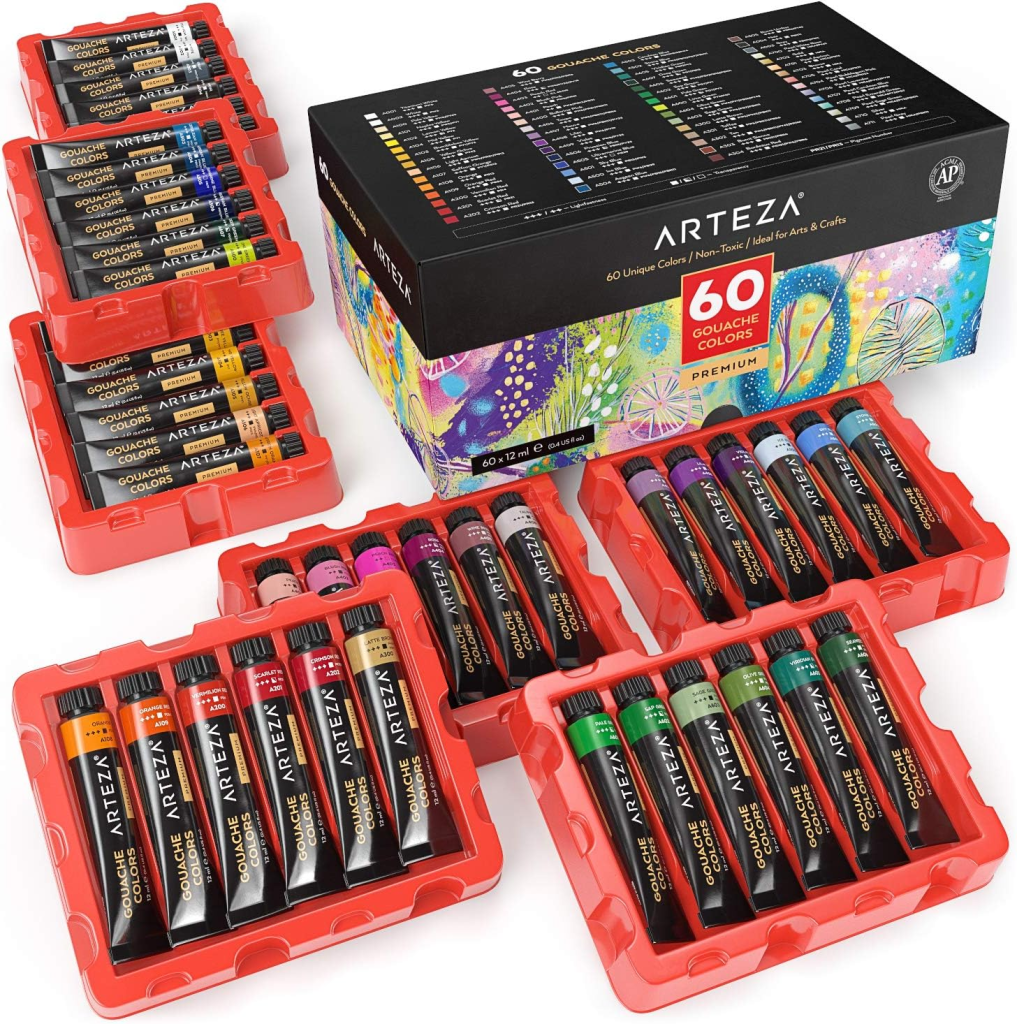
By choosing to use materials from reliable brands like these, you can feel confident that you’re giving yourself the best possible start in your gouache painting journey.
Chapter 3: Exploring Techniques in Gouache Painting
Gouache painting offers a wide range of techniques that can help you create stunning and unique artworks. Mastering these techniques will allow you to fully harness the potential of this versatile medium. In this section, we will explore some essential techniques to enhance your gouache paintings.
Layering Methods

Layering is a fundamental technique in gouache painting that allows you to build depth and complexity in your artwork. By applying multiple layers of paint, you can achieve rich and vibrant colors with a velvety finish. Here are some layering methods to consider:
- Opaque Layering: This technique involves applying thick, opaque layers of gouache on top of each other. It is particularly useful when you want to cover up mistakes or make corrections in your artwork.
- Translucent Layering: Translucent layering involves diluting the gouache paint with water to create a more transparent effect. By gradually building up layers of translucent paint, you can achieve subtle gradations and luminosity in your paintings.
- Glazing: Glazing is a technique where you apply thin, transparent layers of color on top of a dry base layer. This method allows light to pass through the glaze and reflect off the underlying layer, creating a luminous effect.
Importance of Color Mixing
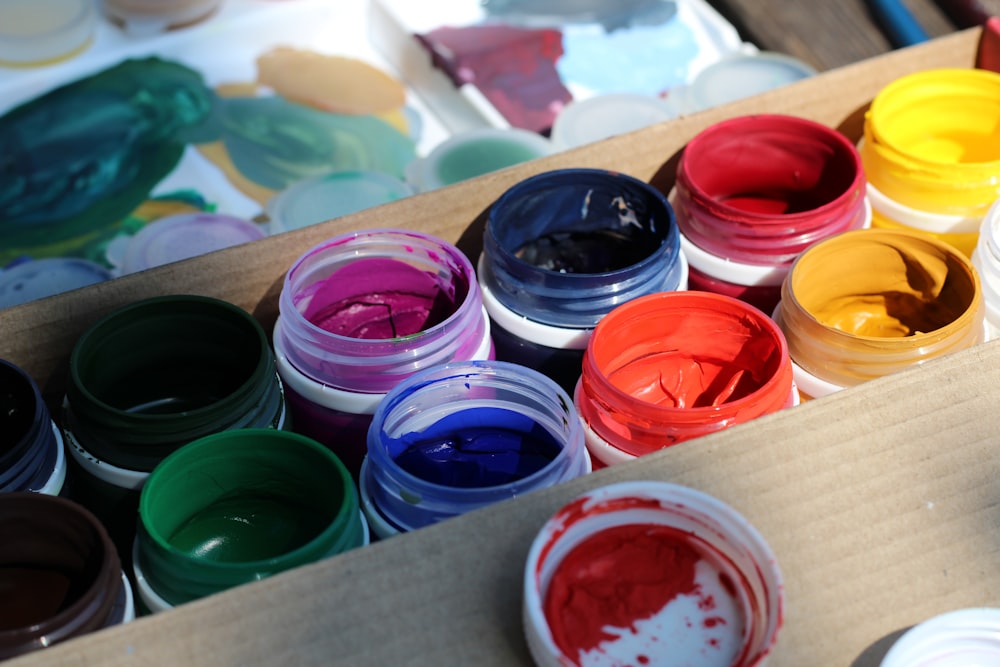
Color mixing is another crucial aspect of gouache painting. Understanding how different colors interact with each other will enable you to create harmonious compositions and achieve the desired visual effects. Here are some tips for effective color mixing:
- Primary Colors: Gouache typically comes in primary colors – red, blue, and yellow. By mixing these primary colors together, you can create a wide range of secondary colors.
- Color Wheel: Familiarize yourself with the color wheel, which helps illustrate how different colors relate to each other. By using complementary colors (colors opposite each other on the color wheel), you can create vibrant contrasts in your artwork.
- Color Temperature: Experiment with warm and cool colors to add depth and dimension to your paintings. Warm colors (such as red and yellow) evoke energy and intensity, while cool colors (such as blue and green) create a sense of calmness and tranquility.
Remember…
Practice is key when it comes to mastering layering techniques and color mixing in gouache painting.
Don’t be afraid to experiment and explore different approaches to find your own unique style.
With time and dedication, you will develop a deep understanding of these techniques and create breathtaking gouache artworks.
“Layering and color mixing are the building blocks of successful gouache paintings. By mastering these techniques, you can bring depth, vibrancy, and harmony to your artwork.”
Chapter 4: Step-by-Step Gouache Painting Tutorial
In this section, we will provide you with a general outline on how to create a beautiful gouache painting.
Step 1: Prepare Your Materials
Before you begin, make sure you have all the necessary materials ready. Here’s what you’ll need:
- Gouache paints in your desired colors
- Different sizes of paintbrushes (round or flat)
- Watercolor paper or a mixed-media sketchbook
- Palette or mixing tray
- Water container
- Paper towels or a cloth for cleaning brushes
Step 2: Start with a Sketch
Begin by lightly sketching your subject on the watercolor paper using a pencil.
This will serve as a guide for your painting.
Take your time with this step and make any necessary adjustments before moving forward.
Step 3: Mix Your Colors
Next, squeeze out small amounts of gouache paint onto your palette or mixing tray. Start with the primary colors (red, blue, yellow) and mix them together to create secondary colors.
Experiment with different color combinations to achieve the desired shades for your painting.
Step 4: Apply the First Layer
Using a large brush, apply a thin wash of color to cover the entire area of your subject.
This layer should be light and translucent, allowing the sketch lines to show through. Use gentle strokes and build up the color gradually.
Step 5: Add Details and Shadows
Once the first layer is dry, use smaller brushes to add details and shadows to your painting. Focus on capturing the texture, shape, and form of your subject.
Remember to work from light to dark, adding layers of paint as needed.
Step 6: Blend Colors
Gouache allows for easy blending of colors. Use a clean, damp brush to blend adjacent colors together.
This technique can create smooth transitions and gradients in your painting.
Step 7: Highlights and Final Touches
This is my favorite part.
To add highlights and final touches to your painting, use a small brush and white gouache paint. Apply highlights to areas where the light hits your subject, creating depth and dimension. You can also add fine details and refine any areas that need more definition.
Step 8: Let it Dry
Allow your painting to dry completely before making any adjustments or adding additional layers. Gouache dries relatively quickly, but it’s important to be patient to avoid smudging or disturbing the paint.
By following these steps, you can create a stunning gouache painting.
Remember to experiment with different techniques and explore your own style as you gain more experience with the medium.
Chapter 5: Caring for Your Gouache Artworks

When it comes to caring for your gouache artworks, proper preservation techniques can ensure that your paintings remain vibrant and stunning for years to come. Here are some essential tips on how to care for and preserve your finished gouache paintings:
Proper Handling and Storage
Handling
Always handle your gouache paintings with clean hands to avoid transferring any dirt or oils onto the surface.
Storage
Store your finished gouache paintings in a cool, dry place away from direct sunlight to prevent fading and discoloration over time.
Sealing Gouache Paintings
One effective way to protect your gouache paintings is by sealing them with a fixative. This clear, matte solution acts as a protective barrier, safeguarding the delicate layers of paint from smudging or moisture damage.
Framing Options
Consider framing your gouache paintings behind glass to provide an additional layer of protection. This not only shields the artwork from dust and environmental pollutants but also adds a professional touch to its presentation.
Cleaning and Maintenance
Use a soft brush or compressed air to gently remove any dust or debris that may have settled on the surface of your gouache painting. Avoid using water or any cleaning solutions directly on the painting, as this can damage the delicate layers of paint.
Display Considerations
When displaying your gouache artworks, be mindful of their surroundings. Keep them away from areas with high humidity or extreme temperature fluctuations to prevent warping or deterioration of the paper support.
By following these care tips, you can ensure that your gouache paintings retain their original beauty and quality for years to come.
Chapter 7: Recommended Gouache Paint Brands
When it comes to selecting the best gouache paint brands for your artistic endeavors, it’s essential to consider the unique characteristics and qualities that each brand offers. Here’s an overview of some top-quality gouache paint brands available in the market, highlighting their distinctive features and suitability for different styles of painting:
- Winsor & Newton Designers’ Gouache: This renowned brand is favored by many artists for its exceptional opacity and smooth texture. It offers a wide range of colors, including traditional hues and contemporary tones, making it suitable for various artistic expressions. Winsor & Newton’s gouache paints are known for their high pigmentation, allowing artists to achieve vibrant and rich color effects in their works.
- Holbein Acryla Gouache: Holbein’s line of acryla gouache is lauded for its versatility, as it combines the characteristics of both acrylic and gouache paints. It dries to a matte finish with a vibrant and opaque appearance, making it ideal for illustrative works and design projects. The paint has excellent lightfastness and can be reactivated with water after drying, offering flexibility in artistic techniques.
- M. Graham Gouache: M. Graham produces artist-grade gouache paints that are crafted using pure honey and gum arabic as binding agents. This unique formulation results in exceptionally smooth and creamy paints that rehydrate easily, allowing artists to work seamlessly on their creations. The brand is recognized for its high pigment load and lightfast colors, ensuring the longevity of artworks.

- Sennelier Extra-Fine Artist Gouache: Sennelier is celebrated for its extra-fine artist gouache range, which boasts a velvety matte finish and intense color saturation. The paints are formulated with natural gum Arabic as a binding agent, enhancing their luminosity and consistency. Artists appreciate the superb coverage and blendability offered by Sennelier gouache paints, making them suitable for diverse painting styles.
- Schmincke Horadam Gouache: Schmincke’s horadam gouache paints are revered for their finely ground pigments that result in smooth and even color application. The range includes both classic and contemporary shades, catering to artists seeking a broad color spectrum for their creative pursuits. The paint exhibits excellent adhesion to various surfaces, allowing for versatile usage in artworks.
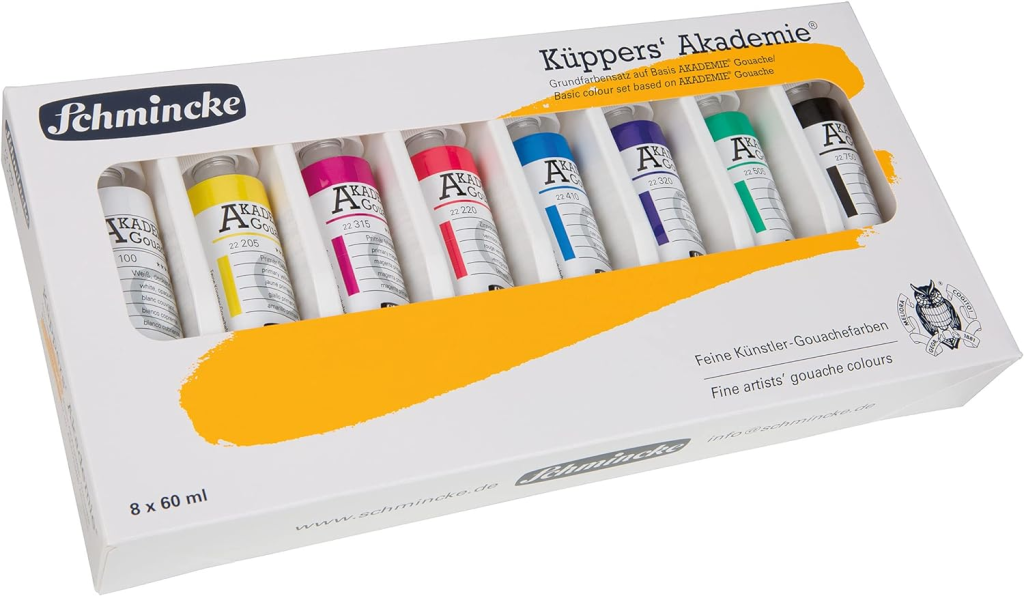
By exploring these recommended gouache paint brands, you can discover the unique qualities that align with your artistic vision and preferred painting techniques. Each brand offers distinct advantages in terms of color vibrancy, opacity, reusability, and texture, empowering you to elevate your gouache painting experience with quality materials tailored to your expressive needs.
Chapter 8: Final Thoughts
Embrace the Beauty of Gouache Painting
Gouache painting in 2024 continues to be a captivating medium, offering versatility and stunning visual effects that inspire artists worldwide.
With its vibrant colors and velvety finish, gouache provides endless opportunities for creativity and expression.
Its unique characteristics make it an exciting choice for both beginners and experienced artists looking to explore new artistic horizons.
Mastery Through Practice and Experimentation
While this ultimate guide has equipped you with valuable knowledge and techniques, it’s essential to remember that true mastery in gouache painting comes with dedicated practice and fearless experimentation.
Embrace the journey of learning and growth as you hone your skills and develop your unique style.
Good luck!

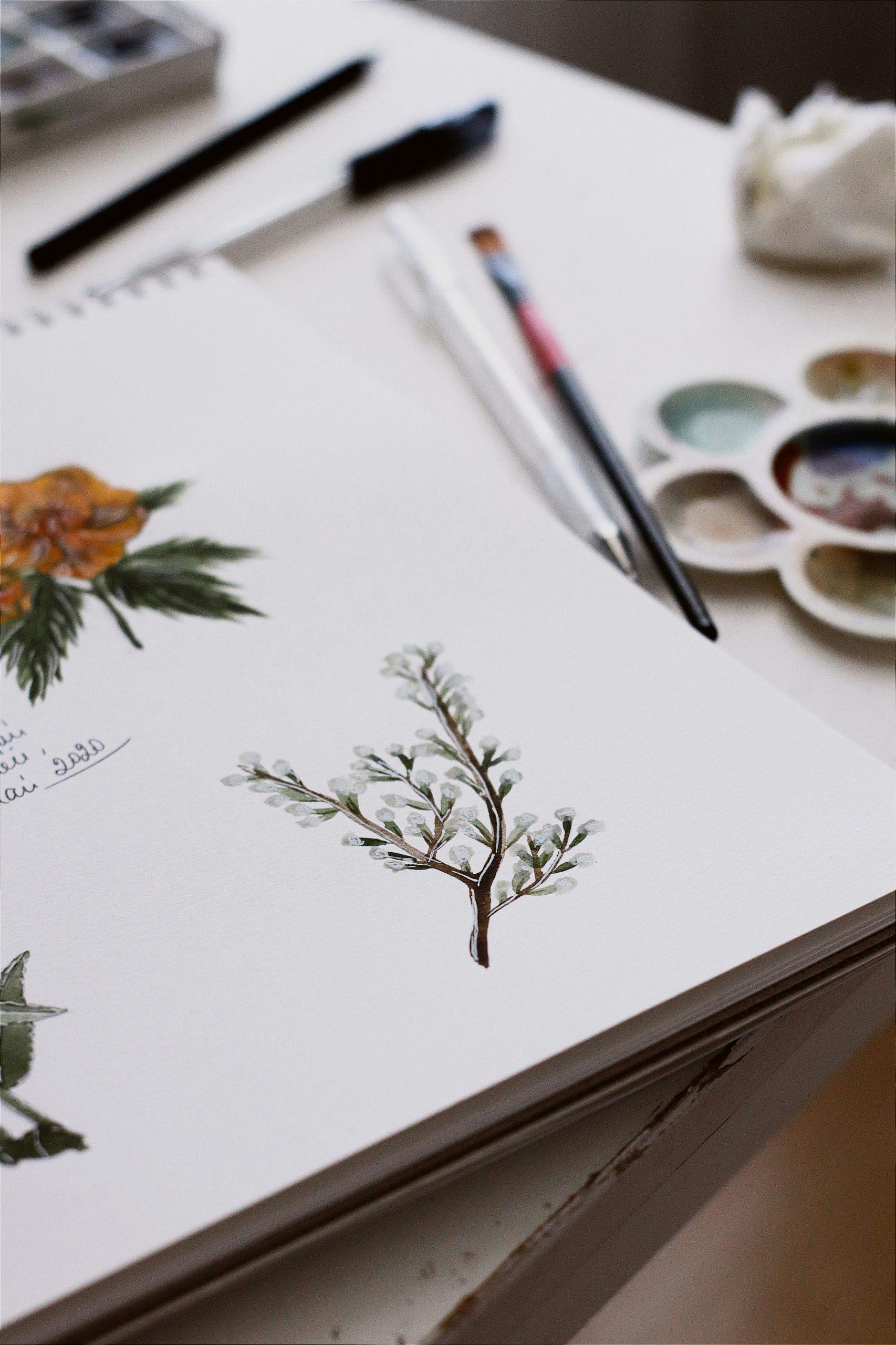

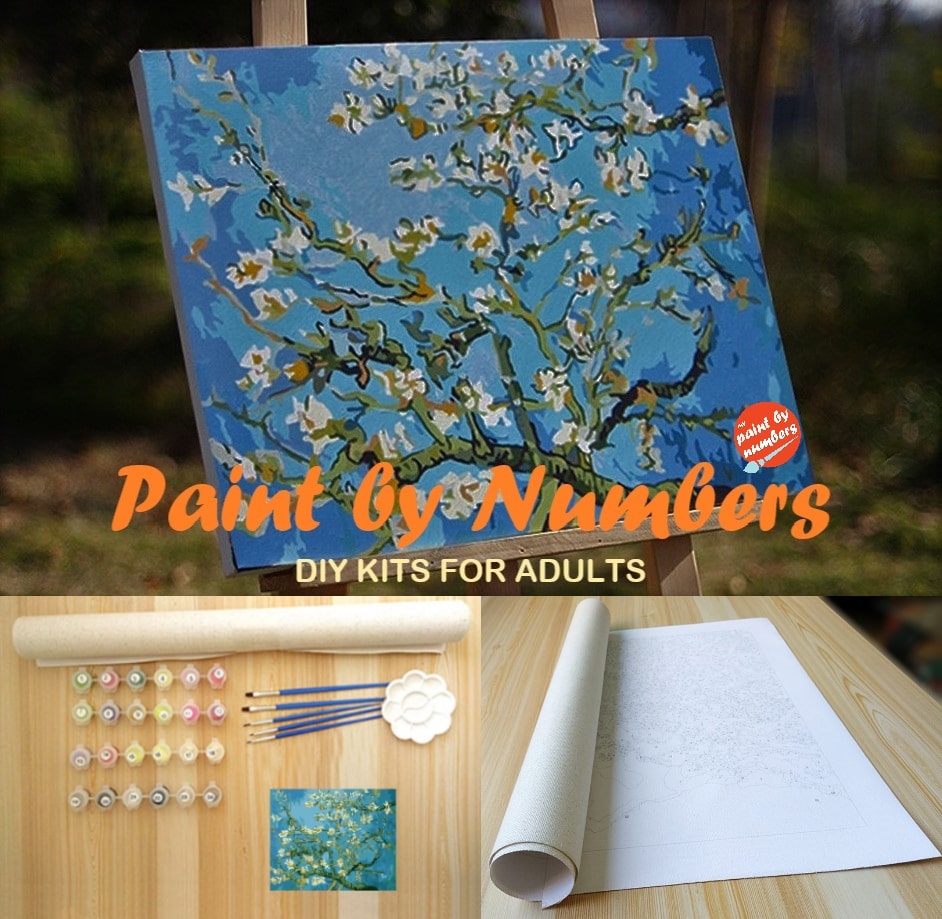
Leave a Reply